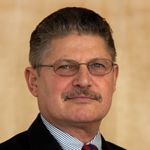
Forest Genetics
Many facets of biology affect the tree improvement delivery system through both their independent and integrated roles. Although it is relatively easy to dissect a system to its small components, the reality is that the system is an integrated entity and, as such, the whole does not equal the sum of all its parts.
Learning Objectives
After viewing this presentation and relevant support material, users should be able to:
- Explain the stages of how tree breeding is done starting from a natural population to delivering genetic gain during regeneration of forests.
- Describe the two major sets of activities that are part of the Tree Improvement Cycle.
- Understand what the assumptions of Eriksson’s Genetic Model (panmixia).
- Explain the deviations from these assumptions that occur in a seed orchard.
- Describe the tradeoff between genetic gain and economic loss that occurs at the seedling production stage of the Tree Improvement Cycle.
- Explain the impact that nursery practices at the seedling production stage can have on potential genetic gain in seedlings used for regenerating a forest.
Presenter
Listen to Dr. El-Kassaby respond to the question: How did I get interested in this area of study?
For more information about Dr. El-Kassaby, please check UBC, Faculty of Forestry
Module Resources
Before viewing a presentation or lab, be sure to read the instructions on using this resource.
Presentation
Dr. Yousry El-Kassaby describes the two interconnected sets of activities that make up the system through which genetically superior trees are selected (tree improvement) and then produced for use in reforestation (delivery). Tree biology constrains the theoretical potential gain through deviations from genetic model assumptions such as reproductive output equality, reproductive phenology synchrony, no pollen contamination, equal self fertility and equal viability; tree nurseries look for ways to manipulate the environment to overcome these constraints.
Other Resources
- El-Kassaby, Y.A. (2000) Effect of forest tree domestication on gene pools. In: Forest Conservation Genetics: Principles and Practice. (Young, A., D. Boshier and T. Boyle, eds.). Commonwealth Scientific and Industrial Research Organisation (CSIRO). CSIRO Publishing-CABI Publishing, Canberra, Australia. 13:197-213. Perry
- White, T.L., W.T. Adams and D.B. Neal. 2006. Forest Genetics, Oxford University Press.
- Eriksson, G., I. Ekberg and D. Clapham. 2006. An Introduction to Forest Genetics. Available online here
Potential Questions for use by Instructors
- Explain how the manager of a seed orchard can best ensure delivery and capture of genetic gain.
- Identify the perceived and actual genetic bottlenecks and explain how they could be avoided.

